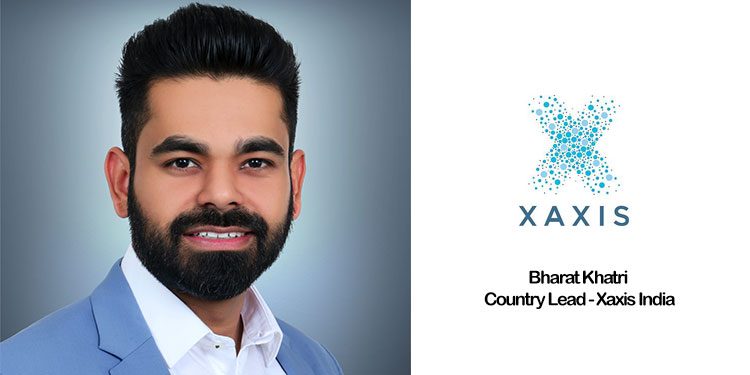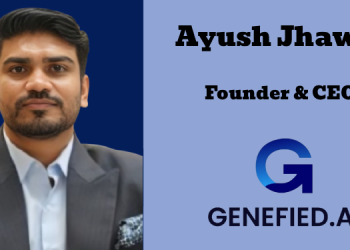Bharat is a strategic digital marketer with more than a decade of experience across digital & sales domains. His primary focus is to leverage technology to drive efficiency and creativity in digital marketing at scale. Bharat is equipped with the combination of strong background in new business setup and experience working for EMENA & APAC regions has given him a future facing & holistic approach to digital marketing in context of all other media. He has a keen eye for identifying and converting digital marketing opportunities into actionable, measurable and revenue-generating business outcomes.
In his current role, as Country Head, he leads the client development & oversees operations and publisher partnerships to deliver best in class programmatic solutions for brands.
Programmatic advertising for many of us may seem a far-off thing in India’s digital future, but last year GroupM’s programmatic arm, Xaxis delivered 2,500+ programmatic campaigns with an average of 200 campaigns per month.
MediaNews4u in a conversation with Bharat Khatri – Country Lead, Xaxis India.
Excerpts:
It’s been 5 years with Xaxis, out of which 18 months as Country Head – your views on how has Programmatic evolved?
During the inception days, programmatic was seen as a channel or medium to run lower-funnel marketing campaigns, or in other words, performance campaigns. However, we’ve seen a drastic shift over the past three years as brands have evolved and advertisers have started using programmatic to automate their digital media buying and activate full-funnel campaigns. Programmatic has delivered the promise of enhancing the brand’s overall value by helping to engage the same consumer at different stages of the purchase journey and enabling advertisers to carry out full-funnel campaigns across several media channels at the same time.
How has buying changed in the recent years after the advent of Programmatic?
From automation of buying & selling of media to pragmatic shift in buying right audiences vs placements, we have come a long way over the past one decade in our programmatic buying journey. One of the best ways to seek better campaign performance is through continuous optimization, which programmatic buying offers as a default feature to help marketers understand in almost real-time which placement in performing best as per the planned media objectives.
In the recent years with the emergence of AI & ML in programmatic, we are now able to augment the buying process by building a custom bidding algorithm to buy the right impression at right time and most importantly at right price. This is the new age blend of human & machine intelligence buying wherein by understanding historic log level granular data like time of the day, ad format type, handset type, creative copy etc., we are able to create a brand’s unique proxy for its desired business outcomes.
Also, with the use of new age verification tools (IAS, MOAT, Nielsen) we are now able to minimize the risk of fraud in our supply chain thus creating more efficient & brand-safe buying for brands.
Programmatic strategy & how have you gone about upgrading skill sets in the organization?
One size doesn’t fit all, same is the case when we craft programmatic strategies for brands.
Depending on which vertical (CPG, Auto, Telecom, Consumer Electronics, BFSI, Retail, Ecomm) the brand fall in, our client engagement team builds a brand centric custom solution focused towards Custom Outcome Indicators which are as closely tied as possible to an advertiser’s real business objective. For example, for an automobile brand we reverse-engineered the campaign objective from a form filled to actual store visits for test drives followed by cars sold. So as a company driven by client centricity, we are evolving our advanced programmatic solutions and services by enhancing our team skills through strenuous trainings around building custom bidding algorithms using our proprietary AI tool COPILOT, along with instilling a mindset in each employee to build & launch omni-channel campaigns for brands.
What is the role of Programmatic in the changing media landscapes?
The unprecedented scale of digital evolution with more & more audience turning to digital medium for payments, entertainment, education etc. will continue to push the change in media mix from traditional channels to digital. Also, the technological advancements & change in infrastructure will result in most of the traditional channels becoming digital; like last year we saw phenomenal success in OOH space, with Digital Out of Home becoming the new norm in a media plan or the most awaited rollout of FTTH internet connections across country to boost the Connected/Smart TV growth. If the future is about getting all media channels digitalize, programmatic will be the best way all media will be traded. And it will definitely become the largest part of any media plan. Most importantly programmatic will play the role of connecting the consumer engagement dot across media channels with automated buying, in turn also making media more addressable.
In 2020 what are the kinds of upgrades you are envisaging in terms of technology? Role of Programmatic Advertising in the near future?
- More usage of AI & cloud platform
- DOOH powered with location data
- Ecomm platform launching their own Demand Side Platform to buy ads.
- Voice moving beyond Alexa, google home & Siri and getting integrated with brand communication.
- Chatbots to drive personalization, user engagement.
- Dawn of FTTH to drive Connected TV revolution.
Ad fraud is another hot topic, your thoughts?
Ad fraud is there in the digital industry and there are ways to curb it. With the recent technology advancements brands can minimize the risks of fraud in the supply chain.
Firstly, I urge all brands to use 3rd party ad servers to serve & host their creatives rather than sharing creative copies with publishers & trusting the media owner with the outcome of their media spends. Secondly, monitor quality of inventory through third party verification tools like IAS, DoubleVerify, MOAT and continue to make necessary adjustment on inventory selection.
I believe the best way to solve for Ad fraud is by increasing the transparency along the programmatic supply chain. One of the simplest projects that IAB launched a few years back was‘Ads.txt’– this now helps programmatic companies like us with buying from authorized digital sellers along with giving control to publishers over their inventory in market. However, we are yet to see the adoption of the same in case of mobile in-app inventory. More so, there is a larger advancement which is happening on ad exchange levels to deploy BLOCKCHAIN & build a guard against domain spoofing, thus, verifying the legitimacy of publishers and allowing transactions using cryptocurrencies. Future of fraud free programmatic inventory now all depends on decentralization, in other words blockchain & Ads.txt.
Way forward for Xaxis?
Our clients’ needs are evolving…. So Xaxis is evolving.
As they go through their own journeys of digital transformation, our clients are rightly focused on more ‘control’ of their data, how brand message appears, more ‘efficiency’, they want to know that none of their media spend is wasted, more ‘effectiveness’, they want their media budgets not to be spent, but invested in ways that drive more business growth, and lastly, more ‘innovation’, as all media goes programmatic, clients need omni-channel programmatic solutions & services. For example, Audio, Video, Digital- Out-of-home, Connected TV, short-form video across social etc.
As a company driven by client centricity, Xaxis is evolving its advanced programmatic solutions and services to suit every need. That means greater support for however a client wants to do business – whether that be delivering against custom outcomes (through custom-built AI), offering more flexibility in commercial models or simply helping them launch a omnichannel campaign.

















